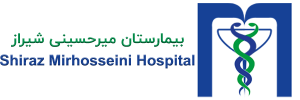M.I
Heart attack terms:
The scientific term is myocardial infarction. Myocardium means the heart muscle and infarction means a damaged area due to blood not reaching the heart muscle.
Description of the disease: Heart attack is the death of heart muscle cells due to the reduction or stoppage of blood flow in the arteries of the heart. It often occurs in people over 40 years of age. This disease is more common in men, but its incidence in women is also increasing.
Common symptoms: chest pain or a feeling (heaviness, compression) in the chest, a pain that extends from the chest to the sternum and sometimes to the jaw, the neck of the arms, and also shoots between the two shoulder blades or the upper abdomen. The feeling of near death. , shortness of breath, nausea and vomiting, lack of sweating, weakness and irregular heartbeat.
In people over 35 years of age, the majority of whom are men, the pain starts in the upper part of the stomach, accompanied by cold sweat on the forehead and hands, which is accompanied by vomiting, which makes the person think they have been poisoned, which is the first priority to diagnose a heart attack. .
Sexual relations: activity is possible from 5 to 8 weeks after a heart attack. Resting before sexual activity, avoiding drinking alcohol and eating 3 to 4 hours before, helps to prevent chest pain. Whenever pain and pressure The chest and shortness of breath should be stopped immediately. Taking nitroglycerin and isosure with iodine dinitrite before exercise helps to control and prevent pain.
Avoiding contact with extreme heat and cold and walking against the wind. Daily walking and gradually increasing the level of activity: recreational activity that reduces nervous pressure. Avoiding activities that cause muscle stiffness, such as weight lifting and refraining from exercising immediately. after the meal
Residence: living in ground floors and quiet areas without noise
Diet: Avoid overeating and eating foods that contain animal fat. Refrain from eating red meat, salty and stimulating foods and instead use poultry and fish because of the beneficial omega-3 fatty acid along with fruits and vegetables including lettuce and carrots, which play a significant role in the health of the body and veins. Do not use the following foods that have a lot of sodium. Spinach, artichoke, red meat, canned fish, sausage and sausage, chips and nuts…
Partial or complete closure of the arteries of the heart by a blood clot due to long-term arteriosclerosis, vascular spasm and constriction, severe disturbance in the beat of the heart rhythm.
Factors that increase the risk: smoking, obesity, high levels of bad cholesterol or low levels of good cholesterol in the blood, high blood pressure, diabetes, a diet full of saturated fats, family history
Most of sitting work and not exercising in extreme heat or extreme cold or wind
Note: a person may not have all these symptoms together.
A test that was conducted on 1466 patients with MI in one of the country’s hospitals, the results obtained are as follows: 70% men, 30% women, out of 100% patients, 44% are smokers, 32% have high blood pressure, 130% have blood lipids and 11 percentage were diabetic.
prevention :
Avoid or control risk factors as much as possible. Research shows that MI kills 13 million people in developing countries every year. This disease kills three times more than people who get tuberculosis and malaria altogether.
Treatment measures include several steps:
A: Identification of the symptoms by the patient and going to the medical center as soon as possible or requesting help through the emergency room
B: The readiness of the emergency team to provide vital emergency measures such as resuscitation operations
C: Transfer the patient to an equipped treatment center as soon as possible and admit the patient to the intensive care unit of the CCU
Heart failure: In the process of disability after a heart attack, a person returns to the optimal psychological, occupational and recreational physiological state and maintains this state. This process starts immediately after hospitalization, the following things should be taken into consideration in this training process.
Personal hygiene: Cleaning the patient’s body is not only useful for health but also for strengthening his spirit. Patients who are treated with anticoagulants such as heparin should use an electric shaver because in case of a scratch, it may cause the blood to not stop. This will make him uncomfortable and it is better to brush his teeth with a soft toothbrush. A patient with MI should avoid taking a cold shower.
Professional activity: Approximately two-thirds of people who have an MI return to work. The best time to return to work is 8 to 9 weeks after a stroke.
Our goal is prevention and timely treatment.
Producer: Elham Bayani
Source: Bruner’s Cardiology book
Compilation date: Autumn 1400
Revision date: three years later “Mir Hosseini Hospital Shiraz”
Drmirhosseinihospital.com: website
Shirazmirhosseinihospital: Insta
Infomirhosseini@gmail.com: email
Phone: 071-32284433: Fax: 071-32287481
